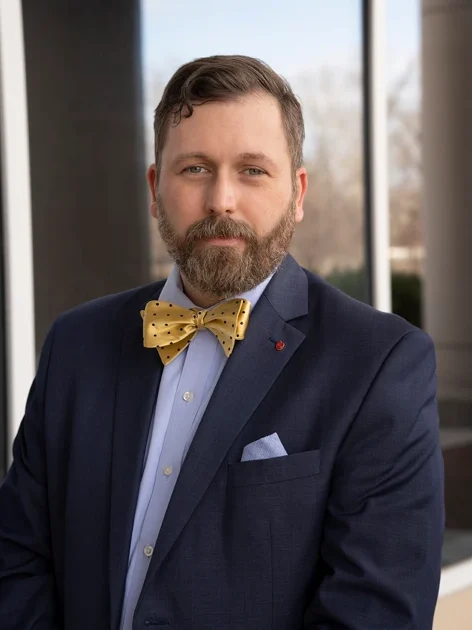
James Hutson
Editor-in-Chief of the International Journal of Emerging and Disruptive Innovation in Education (iJEDIE) at Lindenwood University
Dr. James Hutson: Pioneering Human-Centered AI and Workforce Innovation
Dr. James Hutson stands at the intersection of technology, education, and human creativity. With a foundation in art history and a career spanning academia and applied technology, he has emerged as a thought leader in generative AI and extended reality (XR). At Lindenwood University, he leads initiatives that not only advance research but also make AI accessible to communities, small businesses, and public organizations. Hutson’s work reflects a rare blend of intellectual rigor and social impact, demonstrating how disruptive technologies can be harnessed for inclusive growth.
Can you walk us through your career journey and how you arrived at your current role?
My professional journey started in art history, exploring the connections between visual culture and human cognition. As generative technologies evolved, I realized that artificial intelligence could do more than analyze—it could reshape creativity, decision-making, and human potential. Gradually, I transitioned from traditional research to designing programs that bridge humanistic inquiry with technological fluency. Today, I lead AI and XR initiatives at Lindenwood University and oversee workforce development efforts, bringing AI upskilling directly to communities and organizations that need accessible pathways to thrive in the digital economy.
What motivates you, and what values guide your work?
I am deeply committed to democratizing technology and fostering human-centered innovation. Equity, transparency, and intellectual rigor guide everything I do. I see AI not as an endpoint but as a tool for social mobility, creativity, and lifelong learning. My motivation comes from ensuring that no community is left behind as intelligent systems transform how we live and work.
Can you share a defining moment or pivotal challenge that shaped your leadership?
One defining moment came when generative AI advanced so rapidly that traditional educational models became outdated almost overnight. Instead of retreating, I led a complete redesign of our research and teaching pipelines, embedding AI literacy, ethics, and applied learning across disciplines. That experience taught me that leadership means anticipating disruption and helping others meet it with confidence. It also led to partnerships with regional organizations and industry groups to scale AI training and certification beyond academia.
How do you foster innovation and collaboration within your organization?
I encourage innovation through collaborative studios and interdisciplinary labs where students, faculty, and industry partners tackle real-world challenges together. These environments combine academic inquiry with practical application, often producing prototypes that become community resources. Programs like AI Ambassadors and workforce accelerators create a culture of experimentation that balances creativity with accountability.
What qualities distinguish top-performing leaders in your view?
Top leaders balance vision with discipline. They are lifelong learners who challenge their own assumptions and turn insights into systems that others can use. Resilience, empathy, and data-informed decision-making are essential to navigate technological change while maintaining a focus on the human dimension.
How do you approach mentorship and learning within your teams?
Mentorship is a two-way dialogue. I guide others in research design, ethics, and public engagement, but I also learn from their experimentation and digital skills. My teams include students, professionals, and community partners who co-create training modules and micro credentials for AI upskilling. This approach transforms mentorship into collective growth, making every project a learning opportunity.
What strategies do you use to align your organization amid rapid change?
Alignment starts with clarity—about mission, language, and measurable goals. I use horizon scanning to anticipate technological and policy shifts, translating these insights into actionable objectives tied to community and workforce outcomes. Progress is measured through adoption rates, certifications, and project impact, ensuring adaptability without fragmentation.
What key lesson informs your leadership philosophy?
I have learned that transformation requires both urgency and care. Innovation must coexist with empathy and accessibility. In leading AI and workforce initiatives, I make sure every new development serves a human purpose, balancing technological advancement with inclusion and ethical responsibility.
What advice would you offer to emerging leaders and disruptors?
Start by solving local problems with models that can scale. Document outcomes, iterate quickly, and embrace interdisciplinary collaboration. Ethical imagination is essential—consider how your innovations will affect people’s lives. Most importantly, build partnerships that allow communities to grow alongside technology.
What excites you most about the future of your work?
I am most excited about expanding our AI–XR research and learning commons into a regional hub for digital equity and creative innovation. Our focus on community-based AI upskilling—helping small businesses, veterans, educators, and healthcare professionals adopt intelligent tools—is transforming the way institutions engage with society. This shift from classroom-focused learning to community-embedded collaboration embodies the future of education and workforce development.
Closing:
Dr. James Hutson exemplifies the power of forward-thinking leadership grounded in humanity. By integrating cutting-edge AI with inclusive education, he is creating pathways for individuals and organizations to thrive in an increasingly intelligent world. His work demonstrates that innovation need not be exclusive or abstract; when guided by equity, empathy, and purpose, technology can be a transformative force for communities and society as a whole. Hutson’s career continues to inspire, proving that the most impactful disruptors are those who combine vision with action, and innovation with care.
